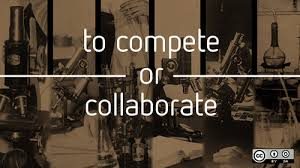CPR by Collaboration
0 comment
As I was mulling over what to say for a recent talk on the state of the sector, I found myself getting more and more depressed. Where, I kept asking myself, was the good news? I refuse to paint a false picture, but I also hate being so negative, particularly first thing in the morning.
The current state of the sector is replete with challenges. Here are the biggies, in no particular order, that impact some, or all, of the individual organizations that make up our whole.
- A growth rate for the sector of 17%-24% that experts say will continue
- A pie of available private, charitable dollars that is steady at best; shrinking at worst
- More governments turning to these same sources of charitable dollars to fund its needs
- A dearth of wanna-be leaders ready, able and, yes, eager to step into the executive directors spots vacated by retiring baby boomers
- Increasing competition from the private sector that believes, as do others, that it can do the work of nonprofits better
- The ongoing, though increasingly difficult, need to identify the path to organizational sustainability
- Ever-expanding oversight from Attorneys General offices, watchdog groups and the media. (Not a bad thing at all, but still a challenge for many and, hence, on this list).
Not, as I said, a pretty picture, but one, replete with opportunity. Therein lies the good news. We have two options when staring at our current reality: we can sit and wring our hands and really get into the “woe is us” routine (at which many nonprofits excel), or we can seize the opportunity to do some serious self-assessment, and more.
The ever growing plethora of nonprofits should have us all asking the same series of questions about our necessity:
- Does our mission still need to exist?
This is not an easy question to answer honestly, but if ever a time demanded bold honesty, this is it. Maybe our mission’s time has passed; maybe it just isn’t what society needs right now. If that is the case, then the organization certainly does not need to continue. After all, nonprofits exist to serve clients, not to perpetuate employment and jobs, yet I increasingly wonder how many leaders of nonprofits seem to have forgotten this.
- If there is still a need for our mission, does this organization still need to exist to push forward that mission?
a) Does it need to exist as an independent organization or would be our mission and clients be better served by merging with another organization?
b) Would this mission be better served through a collaboration?
The conversations by board and staff that would unfold in answering these questions are a huge opportunity to let everyone’s creative juices flow. Nonprofit staff and volunteers spend so much time focused on the day-to-day grind of delivering on the mission that it is a rare exception when they take the time to step back and think, and think creatively and outside the box, with the freedom and encouragement to do just that. (And what happens in the cyclical, often very rote, every three-year strategic planning process doesn’t come close to what should be happening.) And, yet, we must, for trending water doesn’t move us anywhere, and standing still is a death warrant.
Boards these days, if they are even coming close to doing what they are supposed to, spend their time focused solely on the money: do we have enough and we need to fundraise – a conversation that is endless but leads to little to no action. But they too need to be thinking about the world without the missions of the organizations on whose boards they sit and what is the best business model for the organization’s sustainability. They, whose livelihoods aren’t at stake, should be asking the tough questions and seeking the creative answers in order to identify pathways to success.
Figuring out a successful future in this seemingly bleak present is the good news. The possibilities that collaboration offers have only just begun to be tapped. Grantspace’s Collaboration Hub provides, among other things, the stories of successful collaborations from all over the country, providing inspiration and ideas of what’s possible, as well as what to do and not do.
Nonprofits, themselves a result of collaboration of paid and volunteer individuals with different yet complementary skills and experiences all working together to achieve a common goal, should have been far more responsive to exploring such options. Yet, they have remained cool. I’ve never understood why more nonprofits haven’t embraced shared back-office services as an easy way to get serious expert and on-site, personalized help in areas where too often nonprofits short change themselves. Nor, why, if nonprofits remember that it is about mission and clients, there hasn’t been a greater willingness to work together to create a great continuum of care, rather than perpetuating a lesser service doing it all on our own.
The present is only without good news if we allow it to keep us within ourselves instead of reaching outside to explore new options and new ways of serving mission.
The opinions expressed in Nonprofit University Blog are those of writer and do not necessarily reflect the opinion of La Salle University or any other institution or individual.

